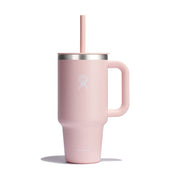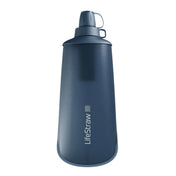From hiking hater to fan. How hiking socks changed my life.
Hey! This is Inga! For several years now, you can find me at Celētotāja, where I work as a sales consultant and at the same time I travel and hike quite a bit. My colleagues and I always try to educate our customers and recommend the most suitable equipment for hiking, because we know how important it is to feel comfortable and safe in order to fully immerse yourself in adventures!

The purpose of the article.
The most purchased item in the store is hiking shoes, so the idea came up to post the information that we usually tell our customers several times a day on the ever-expanding information expanses of the web.
Also so that we don't have to repeat basic stuff so often. 😊 And in case there were a lot of customers when you arrived at the store and we simply didn't have time to tell everyone.
Most customers who come to us for their first serious pair of trekking shoes have already heard how good waterproof Goretex shoes are for hiking. But 99.9999% of them don't know that suitable hiking socks are equally important !
My story
Currently, my everyday life is 100% outdoorsy . I travel a lot, create a Traveler's Advice column on social networks, share my experiences with store customers, and one of my favorite things to do is hike. But it hasn't always been that way. I only started to love hiking after I understood the importance of the right equipment and, above all, the comfort of my feet .
I remember from childhood how much I hated hiking! I always had blisters and sore feet! Even walking along the Sigulda tourist trails turned into torture for me!
Now I know that the shoes were too small and the socks were inappropriate. Back then, it was hard for me to imagine enjoying a hike! And yet, my love of nature and my desire to travel made me not give up and try again and again!
How the stingy pays with blisters
I bought my first pair of proper trekking shoes right at Celētoja. I was planning a trip to Norway with hiking in the mountains. From the information on the web, it was clear that I needed proper waterproof Goretex trekking shoes .
I ran to all the stores in Riga that sold anything with Goretex. Being a picky girl, I was in despair because the offer for women was so small! Every store had at least one pair of trekking boots in my size!
Finally, I ended up at the Traveler, where the selection was the largest. The words of the Traveler employee (now colleague) Linda, when I asked her what equipment to buy for a hike in the Norwegian mountains, are vividly etched in my memory: “The main thing is to have good boots!”
Linda mentioned something else about hiking socks, but I won't hide it - I looked at the price and was, to put it mildly, surprised. And since the budget was already spent on boots, tents, and sleeping bags, I bought the socks for 11.99 euros for two pairs in another store.
Needless to say, that was my biggest mistake. :D Yes, in Mammut Goretex trekking shoes I felt like a tank ! I was shocked that I could wade through all the puddles, mud, streams and my feet didn't slip and were dry ! Seeing how some hiking companions struggled with wet Timberlands and slipped with cheap shoes, I realized that boots were my best investment .
Unfortunately, the boots alone didn't save me from blisters. After less than 10 kilometers, I had to stop regularly, take off my boots, air my sweaty feet , and unsuccessfully try to move the seam of my sock that was rubbing against my little toe ! Absolute torture! At that moment, I realized that those socks were... You know what! I won't say anything!

Searching for socks
On subsequent hikes, my most scrupulous attention was paid to such a seemingly trivial piece of equipment – socks! And needless to say, money was no longer spared for them! Now I know - it's better to spend money on socks than on blister patches and ointments!
I even took several pairs of socks with me on hikes - different manufacturers, materials, and thicknesses. As soon as I felt something was wrong with my feet, I stopped and put on different socks. And finally I enjoyed hiking without blisters !
Now I have found my favorite type and manufacturer of socks. Almost before every long trip, I add new hiking socks to my collection because I have noticed that my socks wear out, as if their softness is shriveling up, so I need to regularly replenish my stock of socks.
What makes hiking socks so special?
Needless to say, when I started investing in quality hiking socks, my feet were grateful . So. What exactly makes hiking socks different from regular cotton socks or low-quality socks? Let's take a look:
- Material : Hiking socks are made from materials such as merino wool, combinations of various synthetic materials (polyester, nylon, elastane, lycra, etc.) and silk. These materials provide excellent moisture wicking, quick drying, breathability and friction prevention , all things that a regular cotton sock cannot.
- Cushioning : Hiking socks have extra cushioning, thicker inserts in the areas where the foot has to bear the most load - the heel and forefoot. These cushioning parts not only provide extra comfort , but also help prevent blisters.
- Good fit : Hiking socks should fit snugly on the foot. Slipping causes friction and blisters . Also, quality hiking socks have thoughtful seams . They are designed to prevent chafing.
- Breathable : It is important that your feet do not sweat excessively and do not overheat .
- Durable : Quality hiking socks are built to withstand long-term use on even the toughest trails. They have reinforcements in areas that are exposed to the most stress.
- Thermoregulating : Hiking socks are thicker than regular socks , but that does n't mean they're warm . The warming or cooling properties of a sock are determined by the materials it's made of, not its thickness. If it says a sock is for cold weather, it shouldn't be used in hot weather, and vice versa. But overall, hiking socks are pretty versatile and adapt to a wide range of temperatures. We also regulate the temperature of our feet with our shoes.
- Antibacterial : Quality hiking socks can be worn for several days in a row without washing, as their material contains antibacterial fibers . Merino wool is naturally antibacterial.
- Quick-drying : If you do need to wash your socks, you won't have to wait long for them to dry! Good hiking socks are designed to dry very quickly . This is especially important for multi-day hikes and expeditions.
- Compression : Some stockings are designed with compression, which can help improve blood circulation. You may need to wear them if your doctor recommends it. I have tried compression stockings, but the constricting feeling is very uncomfortable, so I don't wear them.
Comparison of different materials.
| Material | Cotton | Wool | Synthetics | Silk |
| Moisture wicking ability | Weak | Excellent | Good | Medium |
| Breathability | Medium | Excellent | Excellent | Good |
| Thermoregulation | Weak | Good | Miscellaneous | Low |
| Durability | Low | High | Very high | Medium |
| Comfort | High | High | Miscellaneous | Very high |
| Drying time | Long | Quickly | Very fast | Average |
- Cotton : Although cotton is soft and comfortable, it dries very slowly , making it the worst choice for hiking socks. Cotton socks will keep your feet damp, increasing the risk of blisters.
- Wool : Wool, especially merino wool, is a great material for hiking socks. It is moisture-wicking, breathable, and thermoregulating. Merino wool is naturally antibacterial, so it prevents the formation of unpleasant odors, and is also especially practical in cold weather, as it retains heat even when wet .
- Synthetics : Materials such as polyester, nylon, and elastane are also great for socks. They wick moisture, dry quickly, and breathe well . Durability, comfort, and breathability can vary depending on the specific material mix, so choose socks from reputable manufacturers who have done research into the materials.
- Silk : Silk is usually used in combination with other materials , as it alone does not provide the durability and moisture-wicking properties required for hiking socks. Socks containing silk are especially comfortable and soft !
In summary
Many good quality hiking socks use a combination of materials . This allows you to maximize the best properties of each material and compensate for its shortcomings, thus ensuring that your feet feel as comfortable as possible. All you have to do is choose the most suitable one for you, depending on the hiking conditions, the type of footwear and temperature, and, of course, your own taste.
Hopefully, after reading this article, I have convinced you of how important hiking socks are and that they are worth investing in, because socks can completely change the hiking experience from one where every step is torture to one where you don't have to think about your feet, but only about the beautiful views all around you!
Share this article with your friends so everyone knows how important good socks are!
Share your worst hiking experience! Or do you have a big sock drawer with socks for every hike like me? Maybe you're interested in which manufacturers of socks are my favorite? Any other questions? Feel free to ask in the comments!






























